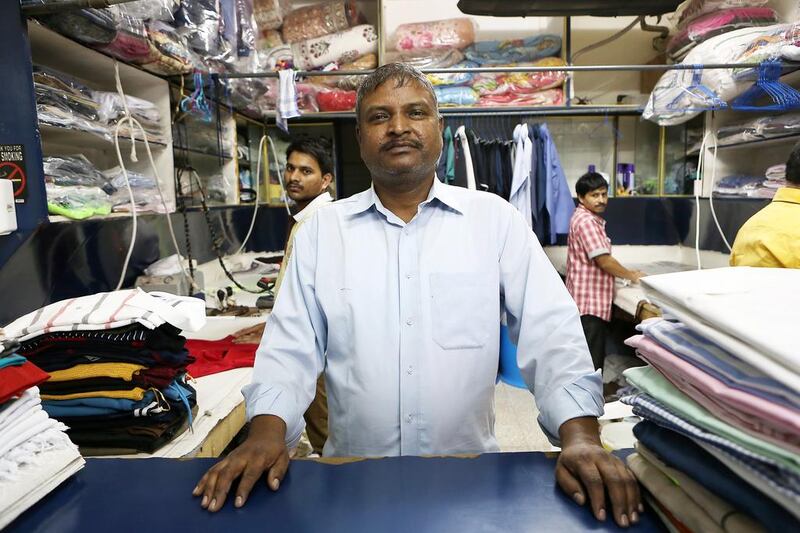DUBAI // Lal Sunder Dori can see the skyscrapers of new Dubai from his laundry in Karama. For more than 20 years, he has watched the city expand while his neighbourhood remained untouched. But now he senses change is in the air.
Sandwiched between Bur Dubai and the green spaces of Zabeel Park, Karama is known for its low rents, shabby old buildings, gridlocked traffic, bustling streets and some of the best, and cheapest, street food in the city.
The development that has swept Dubai has been slow to reach the neighbourhood, with its housing only making way for modern apartments in the last few years.
“It’s a regular practice in the city. Most buildings get demolished after 30 years and new structures replace them. This will also happen in Karama,” said Mr Dori, who has run his shop behind the Sana department store since 1993.
That landmark is also scheduled for demolition. For the last three decades, Sana has served generations of families in the area, who still call the neighbourhood after the store.
“I think I have another seven years. There are other buildings that are as old as Sana. They will meet their fate first,” said the 51-year-old, who plans to return to India when his shop closes.
“I have earned enough from this small shop. Demolishing the place is a deadline for me. I will go back home and spend the rest of my life with my family.”
It is not only bulldozers that have brought change. While the municipality was demolishing buildings, it also commissioned artists to paint huge, colourful murals. The artwork has done much to elevate the area’s image, especially with tourists who come to take photos and stock up on fake designer bags.
However, long-time residents worry what the ensuing change will mean, and whether the area’s traditionally lower and middle class Indian and Pakistani tenants will be part of it.
“Karama, especially behind Sana, is a residential base of lower and middle class families, especially Indians,” said Lijoo Johny.
“We are already struggling with the rising cost of living. The monthly salary of people in this area is Dh10,000 to 12,000. How could we pay rent equal to new Dubai? This is the concern,” said the 32-year-old Indian, who lives with his in-laws in a two-bed flat in the Pioneer building, one of the oldest blocks in the area.
Aside from the abundance of cheap street-side shawarmas and pani puri restaurants, Karama’s big draw was its cheap rents. The old Sheikh Rashid Colony buildings, built on the orders of the late Ruler of Dubai, offered some of the most affordable lodgings in the city.
Nicknamed the 7,000 Buildings because the annual Dh7,000 rent remained unchanged for decades, the complex was pulled down in 2013. Since then, rents have been slow to increase with a one-bed flat now costing Dh50,000 per year.
Kuniyan Ali Mohammed, who has run the Al Madain Restaurant for more than 20 years, is fearful a rise in rents could drive his customers away.
“Almost everyone in the vicinity is middle and lower middle class. My restaurant caters to these people who cannot afford expensive meals. If this population vanishes and is replaced by high-income families who are not ready to sit on these old chairs, how will I survive?” said the 55-year-old Indian, whose eatery serves breakfast dosas from just Dh6.
“Can you get this kind of cheap food in the marina? Dubai is not only rich people, it’s home to people of all incomes. It [Karama] may not be most beautiful but it is home to people who are sole breadwinners for families both here and back home.”
However, not everyone is adverse to change. “Everything has an expiry date,” said Rani, who has lived in the Al Hilal building for the last 20 years. “If the authorities believe this area needs to be improvised then we must also be the part of the development.”
akhaishgi@thenational.ae






